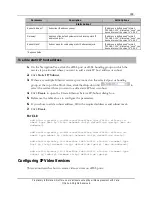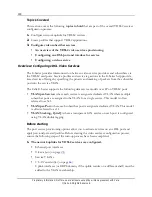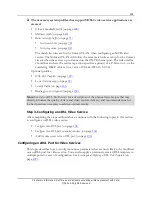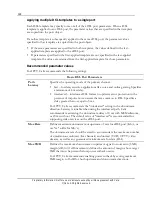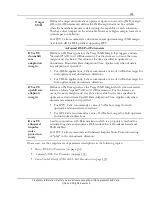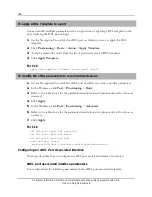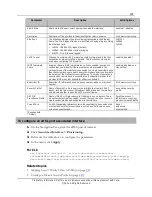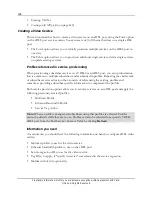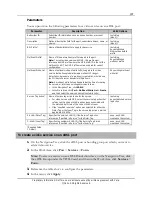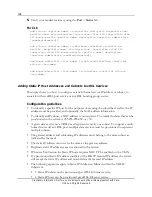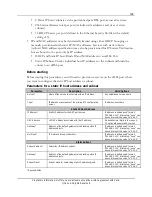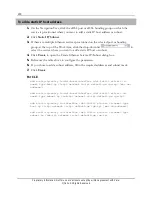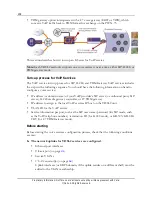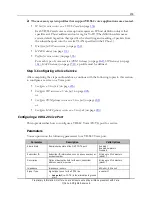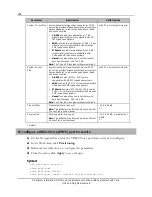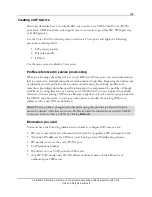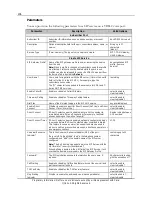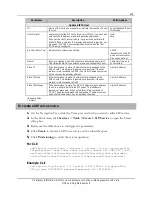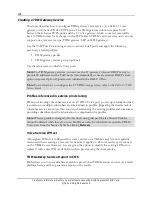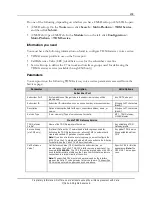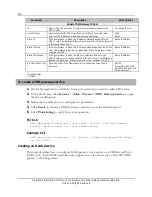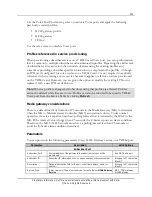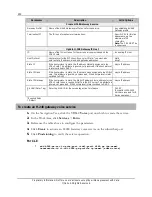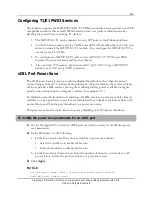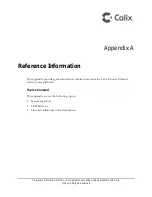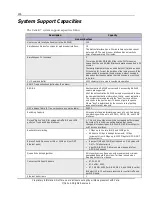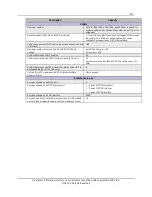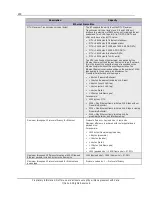
203
Proprietary Information: Not for use or disclosure except by written agreement with Calix.
© Calix. All Rights Reserved.
2.
The necessary system profiles that support VDSL2 voice applications are created.
IP host for voice services on a VDSL2 card
(on page
156
)
Each VDSL2 card voice service option requires an IP host definition object that
specifies an IP host address and outer tag for VoIP. (The definition references a
system default tag action that specifies the classifying and marking of packets from
the subscriber port into the service VLAN specified in the IP host.)
Dial plan for SIP voice service
(on page
158
)
H.248 Gateway
(on page
174
)
Profiles for voice services
(on page
155
)
For each type of voice service (
TDM Gateway
(on page
169
),
SIP Gateway
(on page
161
),
H.248 Gateway
(on page
172
)), a profile must be defined.
Step 3. Configuring a Voice Service
After completing the steps outlined above, continue with the following topics in this section
to configure a service on a Voice port:
Configure a Voice port
(on page
203
)
Configure SIP service on a Voice port
(on page
205
)
or
Configure TDM gateway service on a Voice port
(on page
208
)
or
Configure H.248 gateway service on a Voice port
(on page
210
)
Configuring a VDSL2 Voice Port
This topic describes how to configure a VDSL2 Voice (POTS) port for service.
Parameters
You can provision the following parameters for a VDSL2 Voice port:
Parameter
Description
Valid Options
Admin State
Administrative state of the ONT POTS port.
Enabled ‡
Enabled-no-alarms
Disabled
Subscriber ID
Subscriber ID information, such as phone number, or
account number.
String up to 27 characters
(blank) ‡
Description
Optional description field for the port, subscriber
address, name, or service.
String up to 27 characters
(blank) ‡
Impedance
Impedance in ohms.
600-ohm , 900-ohm‡
Signal Type
Signal type to use for the POTS line.
Loop start
(i.e. POTS) is the alternative to ground
start.
loop-start ‡

